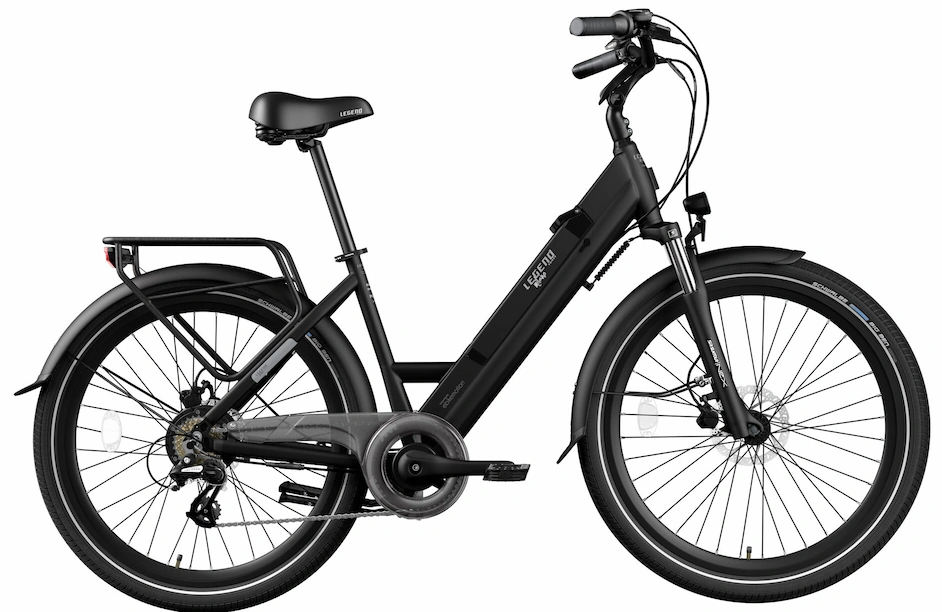It is safe to say I have a challenging e bike damen commute: 41 miles each way; 7 miles of water to cross each way; and 300 meters of vertical to climb on the way home. Given all that, I leverage public transit all I can to ensure I don’t spend 4+ hours a day commuting. That means going over to San Francisco on BART (Bay Area Public Transportation) and down the peninsula on CalTrain or down the East Bay on BART and across the Dumbarton Bridge on bus. The first option was preferable because the CalTrain system on the peninsula has dedicated bike cars. No other system in the Bay area does.
Some Bridges Like Bikes
I was astounded and impressed to find that the Dumbarton is the one transbay bridge that has a bicycle/pedestrian lane all the way across. A heartening fact in the face of the recent Bay Bridge reconstruction’s new bicycle/pedestrian bridge from Oakland to Treasure Island, but not beyond (aka a “bridge to nowhere”).
Anyway, for the first few weeks of April, this plan worked fine. If I got up early enough, I would BART down and cycle across the Dumbarton. The whole trip took 90 minutes, but who’s counting when this includes a workout? (aka a reprieve from a gym visit).
Neither option was super-fast, but given that a traffic jam could make a car trip last 90 minutes or more, neither wasn’t bad. Not to mention, one could fill the whole time with web-surfing or reading, instead of driving.
The Reality
Then Spring hit. It stopped raining and warmed up enough so that other cyclists started having the same idea for crossing the Dumbarton. This ensured that the Dumbarton Express bus racks were always full. I tried getting to it a little early, but no dice: still full. After all, there were only two racks.
I quickly realized that the Dumbarton bus route was not a reliable option for a cyclist given the limited capacity. This produced a real bind. I didn’t have time to cycle the bridge everyday, and I couldn’t reliably get up early enough to beat the bike crowds to the Dumbarton Express bus.
Hefty Hiatus
Right about that time, someone asked me to carpool so I took a bike-commuting-hiatus. However, this felt more restrictive than all the bicycle curfews I was avoiding. No longer could I stay late at work or run errands at lunch with my bike. Carpooling wasn’t working but, by then, I had really fallen off the wagon with early rising so it felt like I couldn’t turn back. Months passed. I gained 10 pounds. I had failed to replace the cycling with another form of exercise. This wouldn’t do.
The New Solution
After trying and failing to get BART to lift their rush hour bike curfew, I suddenly realized that BART’s curfew excluded folding bikes. I researched those and found almost all to be sorely lacking in sturdiness and speed. The one exception was a new generation of bikes coming from a company called Tern.
The Tern Verge X20 seemed like a great candidate for the kind of folding bike I would need. An incredible bike by any measure: folding (easily I might add, which is more than I can say for many); 9.3kg (that’s high end road bike territory weight-wise); SRAM Red components throughout (the very best road bike components, and a price to match of course); and 1.11 inch wide wheels (picture 23c road tire, but only 20 inches in diameter, aka minimal resistance gliders).
This bike sounded perfect, given all my constraints: 300 meters of high-speed vertical on the ride down the hill from my home; 300 meters of steep climbing on the return ride home; bike curfews; rack space constraints; and time constraints (lighter equals much shorter commute times on bikes).
With a folding bike, I could travel with impunity on any transit system. The bike wouldn’t even need a bike rack on a bus and it would circumvent the curfews on BART. Best of all, because it was ultralight and ultrafast, it would climb hills and cross flats almost as fast my road bike. “Woohoo! What a great time to be a bike commuter”, I thought.

More Stories
What Types of Injuries Do Queens No-Fault Doctors Treat Most Often?
Difference Between Workers’ Comp Doctors and Regular Physicians in Rego Park
Physiotherapists: The Architects of Movement and Recovery